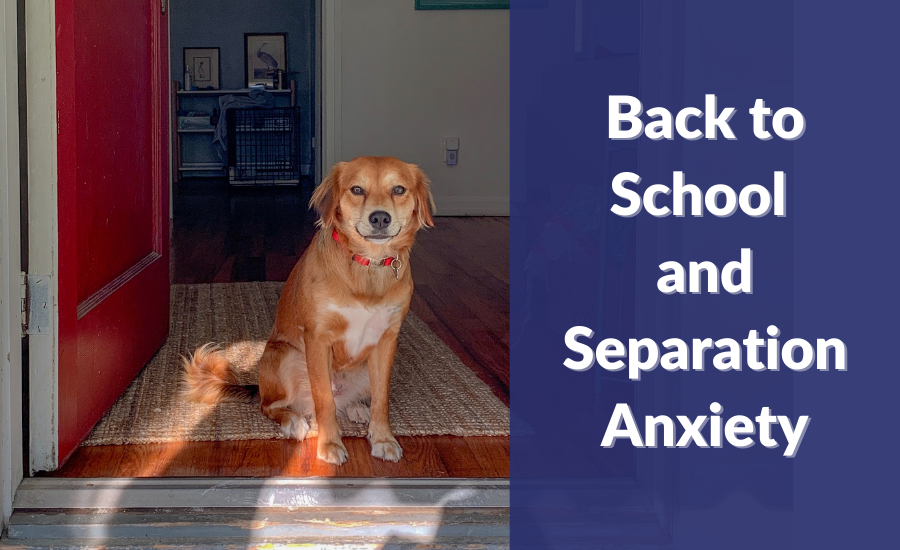That Went Quickly
Oh, sweet summer! You’re almost gone. Those luxurious, languid summer days are nearly over. School will start before we know it, and with it will come all the hustle and bustle of a new school year. It’s fun and exciting for children and a familiar juggling act for parents, but separating from their people after a summer filled with pets and scratches can be very stressful for pets. Seasons change and so do our responsibilities. We have to work, and our children have to go to school, but hours spent away from their favorite people might affect the pets we love so much.
Signs and Symptoms of Separation Anxiety
Our sweet (or salty) pets. They greet us with the love and exuberance only shown by them and small children. Their behavior may change, though, when they’re greeting you at the door after a long day apart. Cats, for example, might become overly excited to see you – so spirited that it’s out of character for them. That kind of reaction to your homecoming is one sign that they’re experiencing separation anxiety. Additional signs that your cat might be experiencing stress related to separation are:
- Going to the bathroom outside the litterbox
- Vomiting an unusual amount
- Not eating
- Eating too much
- Crying or meowing much more than usual
- Scratching or clawing objects destructively
- Grooming themselves excessively
Our stereotypically aloof feline friends may exhibit other symptoms that are outside their normal behavior. They may seem overly anxious or just not themselves.
Dogs may exhibit some of the same symptoms of separation anxiety as cats, but they’re generally much more overt in their anxious behavior. Dogs might:
- Urinate or defecate in the house
- Howl, bark, or vocalize in other ways
- Pace
- Pant, drool, and salivate
- Exhibit destructive behavior like chewing or digging
- Lick their paws excessively
- Try to escape
These symptoms of separation anxiety are challenging for our furry friends, but there are ways to help them.
How To Support An Anxious Pet
Seeing our furry friends in such distress is dispiriting, but there are a variety of ways to help them. Some of these are:
- Place a new perch or cat tree in a window so they can watch the world go by
- Walk your dog for thirty minutes before you leave in the morning
- Hide small treats around the house for your pet to find
- Provide engaging interactive toys
- Provide them with a quiet, safe spot like a crate
- Consider doggy daycare
- Have someone stop by midday to give pets and love
- Develop and maintain a regular routine
If you’ve tried these things (and perhaps more) and your pet is still anxious, calming medications might help.
What Can Be Done?
Minnesota Veterinary Hospital, which serves Shoreview, MN, and the surrounding areas, can help your pet. Whether you decide to have your dog participate in our doggy daycare or you want to explore anti-anxiety medication for your pet, we’re here to help. Our facility is a certified Fear FreeSM facility. We’re very well-versed in caring for your pet in a way that helps them feel safe and comfortable while at our office, and we can help you create the same feelings of safety and comfort while they’re home alone. Contact us for more information.

